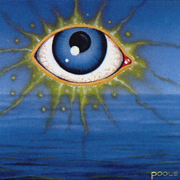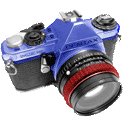|
InternetJunky posted:Gear discount only applies to "pro" gear. For camera bodies that means 1DX only, for lenses it's just L glass. It's a crazy discount though (~10%). When you call up a Canon dealer you need to ask them what the CPS pricing is for whatever you're interested in, and have a CPS member number ready for them. Huh... Since I was about to pick up an L lens in the next few weeks sounds like a perfect time to see if it works in the States. Thanks a bunch.
|
|
|
|

|
| # ? Apr 25, 2024 20:48 |
|
Anubis posted:Does anyone do the Canon Professional Services Gold or Platinum? I found I qualify and am tempted, as it would work as a mild maintenance plan with an added benefit of a flat yearly rate to test gear before I buy. Not sure how generous they are on loaning stuff to gold level but just curious about other people's experience with it. I'm on Gold. It's really nice to have the clean & checks, and the repair discount is helpful in justifying the expense. From September of 2014 to now, I've borrowed 4 different lenses -- the 24 Tilt-Shift, 135 f/2, 50 f/1.2, and 24 f/1.4. They've always been really easy to work with, and have let me specify dates when there's availability -- I sent an email in February requesting a specific weekend in April, for instance, and they've hit the delivery date every time. A week after they approved my 70-200 2.8 IS II loan, I bought one, and they switched the lens to the 50 1.2 on my request, no problem. I tried to evaluate the 11-24 back in November but it was super backlogged, so they just asked if I wanted to try something different that time, as well -- that's when I evaluated the 24 1.4. I had no idea about the CPS discount on gear. That's nuts! Most of my purchases have been used gear, but that's good to know...
|
|
|
|
If they don't offer the discount in the US I would call up Canadian camera stores and try to use your CPS membership there to get the discount. With the ridiculous exchange rate right now you should be buying from Canada anyway if you live in the US.
|
|
|
|
InternetJunky posted:If they don't offer the discount in the US I would call up Canadian camera stores and try to use your CPS membership there to get the discount. With the ridiculous exchange rate right now you should be buying from Canada anyway if you live in the US. Oh snap, that hadn't even crossed my mind. And apparently the service plans are good across the border, from what I've read. I contacted them and the person I talked to said Canon Canada wouldn't ship to the US, but I found a few online places willing to do it. You got a preferred 3rd party dealer up in the great white north? Right now I'm looking at just ordering from Henry's.
|
|
|
|
So this isn't specifically a Canon question but it came up whilst discussing Canon SLRs and this is the only photography thread I post in, so gently caress it. When it comes to CSCs, what are the tradeoffs you make in terms of optics? It's the same size sensor as a crop-frame SLR (e.g. my 500D) but the lenses are way narrower, or at least they look like it. Despite the smaller lenses, they still have fast apertures and here's where my knowledge of "what an f-number represents" breaks down because I feel like you must be losing out on something (because the lenses have a narrower diameter) but... what? As I understand it, an f-number is constant across lenses of the same focal length so if two 35mm lenses both go to f/1.8 then they should have an aperture of 19.4mm and capture the same amount of light, right? And because the sensor size is the same in a CSC and a crop-frame SLR, you should get exactly the same image all else being equal. So... what'd I miss?
|
|
|
|
Sorry, but what is a CSC?
|
|
|
|
TheAngryDrunk posted:Sorry, but what is a CSC? Sorry - too many TLAs! A Compact System Camera, often referred to in this thread as a "mirrorless" camera.
|
|
|
|
rolleyes posted:Sorry - too many TLAs! A Compact System Camera, often referred to in this thread as a "mirrorless" camera. Yes, In terms of light-gathering ability, the aperture is always equivalent regardless of sensor size. f/1.8 on your cell phone gathers as much light as f/1.8 on a full frame camera. There's no inherent trade off just because a camera is a CSC, all specs being equal.
|
|
|
|
Anubis posted:Oh snap, that hadn't even crossed my mind. And apparently the service plans are good across the border, from what I've read. I contacted them and the person I talked to said Canon Canada wouldn't ship to the US, but I found a few online places willing to do it. You got a preferred 3rd party dealer up in the great white north? Right now I'm looking at just ordering from Henry's.
|
|
|
|
TheAngryDrunk posted:Yes, In terms of light-gathering ability, the aperture is always equivalent regardless of sensor size. f/1.8 on your cell phone gathers as much light as f/1.8 on a full frame camera. This is assuming the lenses are the same size right?
|
|
|
|
A Saucy Bratwurst posted:This is assuming the lenses are the same size right? I think this is what I'm ultimately getting at. Two lenses. Both have a 35mm focal distance. Both have a max aperture of f/1.8. Both are for APS-C sensors. The front element of lens A is 30mm in diameter which, whilst small, is physically large enough to permit that aperture. The front element of lens B is 60mm in diameter. Do they both gather the same amount of light? Intuition says to me that the larger front element should mean more light gathered, but maybe I'm missing something about optics.
|
|
|
|
I'm not sure that's a physically likely scenario. (f-number) = (focal length) / (diameter of aperture opening) I think you get slight variations because you can oversize the glass slightly to improve edge performance (vignetting, edge softness, etc). Plus the manufacturers do round both focal length and aperture to the nearest nice number. But for every lens actually on the market, divide the focal length by the max aperture and you won't be far off the diameter.
|
|
|
|
rolleyes posted:I think this is what I'm ultimately getting at. The f-stop number is a ratio hence lens A and B would not have the same f-stop number unless one of them is using some crazy exotic glass or light-bending optics.
|
|
|
|
InternetJunky posted:I would recommend http://www.thecamerastore.com/ No US shipping, based on their website. Got a 2nd?
|
|
|
|
alkanphel posted:The f-stop number is a ratio hence lens A and B would not have the same f-stop number unless one of them is using some crazy exotic glass or light-bending optics. Yeah that bit I know and - as Pablo said above you - it's focal length / aperture diameter. F1.8 on a 35mm lens only tells you that the minimum lens diameter is 19.4mm, because that's the aperture diameter. For example, take my 500D: there's an EFS 24mm f/2.8 prime so max aperture diameter is 8.6mm, but the front element is approx 52mm (that's the filter size). Now take Canon's CSC, the apparently hated EOS-M: it has a 22mm f/2 prime but let's set that to f/2.8 to match the lens above as closely as possible, giving an aperture diameter of 7.9mm. However, the front element is approx 43mm (that's the filter size). The area of a circle = πr^2, so the EOS-M lens has 30% less area up front. With both set to f/2.8 then I would expect the EFS lens to have a much brighter image circle but again, I feel like I'm missing something because I always thought f-numbers could be translated between lenses so long as the focal distance was the same (or very close).
|
|
|
|
Ah ok, I think I finally found the right combination of search terms to get Google to stop patronising me by explaining what an aperture is, and actually answer the question."PremiumBeat posted:The Science of the F-stop So in short, whilst the f-number is a decent rule of thumb for the brightness of the image circle they are not directly comparable across different lenses.
|
|
|
|
rolleyes posted:So in short, whilst the f-number is a decent rule of thumb for the brightness of the image circle they are not directly comparable across different lenses. This is why most people have learned how to adapt to their metering system of choice, using aperture or shutter priority + exposure compensation, on DSLRs especially. It's also why for the first few minutes/frames of shooting after changing a lens I usually do some chimping. I get burned going from the 135mm f/2L (which is very bright) to the Sigma 50mm f/1.4 A (which is not as at f/2, as it has a kilogram of darkly purple and green coated glass in it). I'd like to say you eventually learn how to get around this but you really don't (at least I don't), especially when you've spent several hours on one lens and flip to another.
|
|
|
|
Anubis posted:No US shipping, based on their website. Got a 2nd? Although it might be worth the effort to call up the camera store just to confirm. I could swear I've heard of them selling to the US.
|
|
|
|
Check photoprice.ca for Canadian prices and options.
|
|
|
|
rolleyes posted:So this isn't specifically a Canon question but it came up whilst discussing Canon SLRs and this is the only photography thread I post in, so gently caress it. Now, letís look at the apertures. If both lenses are fixed at f/4, the FF lens will have an aperture size of 50mm/4 = 12.5mm (and will have the glass size needed to feed that aperture), while the APS-C lens will have an aperture size of 33.3mm/4 = 8.3mm (and accordingly need smaller glass). So, at a given FOV and f-stop, an APS-C lens needs to transmit less light, and thus has smaller glass. So, the question people then have is why FF and APS-C cameras have the same brightness at the same F-stops. The answer is that the smaller sensors have to be boosted more to match the ISO standard despite receiving less light than FF sensors. And accordingly, at a given ISO, APS-C sensors are noisier than FF sensors with the same technology. And I know that a number of people wonít accept the explanation I gave above, but one cool thing is that thanks to the Metabones Speed Booster, it isnít just a thought exercise anymore. The Speed Booster takes a FF lens and lenses its image circle down to fit on an APS-C sensor (instead of throwing the outer part of the image circle away like you would by mounting a FF lens on an APS-C sensor normally). What that results in is the APS-C sensor getting (approximately) the same FOV and depth of field that the FF lens would give you on a FF camera. But remember that your APS-C sensor is boosted more than a FF sensor, so now that your sensor is getting an extra stop of light from the FF lens (just like the FF sensor would get from the lens) instead of throwing it away due to being an APS-C sensor, you can bring your ISO down by a stop. For example, take a look at the two images below. The top image is taken with a Canon 5D and a f/2.8 lens. The bottom one is taken with the same lens and same aperture on an APS-C camera and a Metabones Speed Booster (with the same ISO). You can see that the FOV and DOF are about equivalent, but the APS-C image is brighter. 
|
|
|
|
Well that's kinda cool, I never really thought about how all this might impact on sensor noise but what you say makes perfect sense. Anyway, I'll end my lens-maths derail now - sorry for cluttering up the thread.
|
|
|
|
rolleyes posted:Well that's kinda cool, I never really thought about how all this might impact on sensor noise but what you say makes perfect sense. Thanks for bringing it up, really interesting stuff I didn't know about!
|
|
|
|
rolleyes posted:Ah ok, I think I finally found the right combination of search terms to get Google to stop patronising me by explaining what an aperture is, and actually answer the question. That's not what's going on here though. T stops are impacted by how much light gets transmitted through each element, but for a certain F stop, the size of the element doesn't affect the T stop (unless it gets too small, but that would affect the F stop as well). It's actually a lot simpler. A larger element means weaker aberrations, so in theory, a sharper image. Lenses with an oversized element will have an iris that blocks some of the light, even when the lens is wide open. So, you're right, the bigger lens should be capable of making a brighter image, but it gets intentionally stopped down from the theoretical max aperture on purpose, either due to the rest of the lens's internals, or just because that's the aperture where it makes an acceptably sharp image. T stops vary so little between modern lenses of the same aperture that I wouldn't worry about them at all. Videographers care because it's important that the exposure is exactly identical when filming a scene with multiple lenses. T stops are determined pretty much entirely by the type of glass and the coatings used in the lens. ShadeofBlue fucked around with this message at 00:07 on Feb 15, 2016 |
|
|
|
InternetJunky posted:https://www.vistek.ca/ Thanks, didn't check on the US CPS in Canada but just ordering from vistek saved me just over 21% vs Canon US on a rather large order. I appreciate it a bunch.
|
|
|
|
ShadeofBlue posted:More OK, also interesting. So the potential tradeoff on a more compact CSC lens is a risk of more noticeable aberrations. And maybe a slightly darker image circle at the same aperture.
|
|
|
|
Nomenclature posted:The way I think it is easiest to think about it is in terms of equivalent fields of view. For example, to get the same field of view as a FF 50mm lens, a 1.5x crop factor lens needs to be at 33.3mm. At those two focal lengths, the same amount of reflected light is available to both lenses. The FF lens uses a larger image circle than the APS-C lens which is where the extra "brightness" from the increased diameter of the aperture at an equivalent fstop goes. About the same intensity of light is hitting each image circle, APS-C sensors don't have to be boosted because their lenses are darker. The reason APS-C has more noise is that the photosites are smaller, in other words the pixels are packed more densely so there is less light captured per pixel. You can take an APS-C lens and put it on a full frame camera if you don't believe me. If you hold the shutter, ISO, and aperture constant the area where the APS-C image circle hits the sensor will expose the same as it would with a full frame lens of equivalent aperture. The reason the speed booster creates a brighter image on APS-C at an equivalent aperture is that, like a magnifying glass being used to focus light to burn ants, it's taking the light from the larger full frame image circle and focusing it down to the size of the smaller APS-C image circle. That's where the "extra stop" comes from with the speedbooster, the increased intensity of the light from being focused into a smaller image circle.
|
|
|
|
Dren posted:The FF lens uses a larger image circle than the APS-C lens which is where the extra "brightness" from the increased diameter of the aperture at an equivalent fstop goes. About the same intensity of light is hitting each image circle, APS-C sensors don't have to be boosted because their lenses are darker. The reason APS-C has more noise is that the photosites are smaller, in other words the pixels are packed more densely so there is less light captured per pixel. You can take an APS-C lens and put it on a full frame camera if you don't believe me. If you hold the shutter, ISO, and aperture constant the area where the APS-C image circle hits the sensor will expose the same as it would with a full frame lens of equivalent aperture. Yeah, since like for like pixel densities of the same tech iteration have the same pixel level noise (5ds / 7d2) The reason the full frame images look cleaner at the image level (vs pixel ) still is because it's not being magnified as much. The noise is averaged away when you're not looking at pixels.
|
|
|
|
Nomenclature posted:
I really think you're mistaken about this noise being due to amplification. I think it's well understood to be related to signal to noise changes as pixels get smaller. For equivalent FOV (50mm FF, 33mm crop), at equivalent F-ratio (e.g. f/2 on both), the light intensity reaching the sensor is identical in both cases (light per square mm of sensor surface area). That's just a fact. There is less total light reaching the sensor in the crop body, but that's not relevant. That's just what makes it a crop (cropping out the center of the FF sensor). The noise differences between FF and crop are because the crop sensors typically have much smaller sensor elements (pixels). Light per square mm of sensor is the same, but there are typically more pixels per square mm on a crop sensor (a 24 MP crop sensor has smaller pixel elements than a 24 MP full frame sensor). This still doesn't mean the crop sensor has more amplification. It does mean that there is less light gathered per pixel on a crop sensor (same light per mm^2, more pixels per mm^2, = less light per pixel), which means that signal to noise ratio is worse (signal = photon count per pixel, noise = electrical noise common to all sensors of a given technology generation). See this link for a good explanation. The signal to noise and constant light per mm^2 is illustrated in figure 1. http://www.clarkvision.com/articles/does.pixel.size.matter/ So the noise you see in a crop sensor is because of signal to noise ratio decreases when the pixels get smaller. That's not amplification. This is all totally irrelevant to taking pictures, and the net is that smaller cameras with smaller pixels take noisier images, but whatever. Internet.
|
|
|
|
Dren posted:The FF lens uses a larger image circle than the APS-C lens which is where the extra "brightness" from the increased diameter of the aperture at an equivalent fstop goes. About the same intensity of light is hitting each image circle, APS-C sensors don't have to be boosted because their lenses are darker. The reason APS-C has more noise is that the photosites are smaller, in other words the pixels are packed more densely so there is less light captured per pixel. You can take an APS-C lens and put it on a full frame camera if you don't believe me. If you hold the shutter, ISO, and aperture constant the area where the APS-C image circle hits the sensor will expose the same as it would with a full frame lens of equivalent aperture. So, what about putting an APS-C lens on a FF camera? Let's re-use the same lenses and sensors as the above example. The APS-C lens again provides a light intensity of 100 photons per 35.8mm^2, for a total light input of ~1,030 photons. On a FF camera, the image circle (or at least the rectangular portion we care about) will cover 10.3 photosites. 1,030 photons distributed to 10.3 photosites gives an intensity of 100 photons per FF photosite. So, as you can see, despite the APS-C lens providing less total light, it looks just as bright as a FF lens when the APS-C lens is placed on a FF sensor. So, in other words, the APS-C lens still provides the same intensity of light, but because that light is distributed among fewer pixels on the FF sensor, each FF pixel gets more light than it would get on an APS-C sensor with the same number of total pixels, thus making the image the same perceived brightness in the FF crop. (Also, the aperture diameter at a given f-stop doesn't change between a FF lens and an APS-C lens; it's a calculated number that doesn't take the diameter of the glass into account.) timrenzi574: See above. Graniteman: If that were the case, the Metabones Speed Booster would be magic. Also, I am ignoring things like on-pixel circuits and wiring, etc. which do cause more noise with smaller photosites. But those are less important than exposure, and developments like BSI and copper wiring are making them less important. Nomenclature fucked around with this message at 20:32 on Feb 15, 2016 |
|
|
|
Nomenclature posted:Graniteman: If that were the case, the Metabones Speed Booster would be magic. I think we are saying the same thing, but you are calling it amplification and I'm calling it SNR. You are right that it's just photons per pixel. I just disagree that it's got anything to do with the lens aperture. If you put the same smaller pixels in a full frame camera you'd get the same noise. Is a 24 MP full frame camera doing more amplification than a 20 MP full frame camera? By your argument the answer is yes, but that doesn't seem like a useful distinction. The SNR scales with the ratio of pixel pitches between sensors. That's true across all sensor sizes, regardless of lens sizes or crop factors of the sensor total area. Do check that link that I posted as it's quite detailed, written by a PhD astronomer who's designed imaging systems.
|
|
|
|
Graniteman posted:I think we are saying the same thing, but you are calling it amplification and I'm calling it SNR. You are right that it's just photons per pixel. I just disagree that it's got anything to do with the lens aperture. If you put the same smaller pixels in a full frame camera you'd get the same noise. Is a 24 MP full frame camera doing more amplification than a 20 MP full frame camera? By your argument the answer is yes, but that doesn't seem like a useful distinction. The SNR scales with the ratio of pixel pitches between sensors. That's true across all sensor sizes, regardless of lens sizes or crop factors of the sensor total area. But we are kind of getting off track, since I was discussing lenses, and just sensors incidentally to that. rolleyes asked why FF lenses are larger than APS-C lenses at a given aperture, and I explained that if we make things easier to get our heads around by keeping the FOV the same, the FF lens with the same f-number will have a physically larger aperture in order to throw a larger image circle with the same intensity as the APS-C lens. And that an APS-C sensor with the same number of pixels as a FF sensor will receive about a stop less light per pixel at a given f-stop and FOV than the FF sensor. And for the brightness to stay the same at that f-stop between sensors, the APS-C sensor or image processor has to compensate for that missing stop of exposure at some point. Anyway, back to the original question, to put things a third way and hopefully make things clearer: Let's say I am a manufacturer who makes a 50mm f/1.8 FF lens (aperture diameter of 27.8mm), and I want to make an APS-C lens with the same field of view that lets in the same amount of total light. The APS-C lens will have a focal length of 33.3mm, and to let the same amount of light in, I need an aperture diameter of 27.8mm. So, I build that lens. But, am I going to sell it as a 33.3mm f/1.8 lens? Of course not! Its aperture is 33.3mm/27.8mm = f/1.1978, so I am going to sell it as a 33mm f/1.2 lens and charge a premium for it! Nomenclature fucked around with this message at 21:05 on Feb 15, 2016 |
|
|
|
The focal length of a 50mm f1.8 lens is 50mm regardless of the camera that it's mounted on. You're just flat-out wrong. Now you're talking about a lens with a 33mm focal length versus a lens with a 50mm focal length.
|
|
|
|
The place where he's getting twisted is not accounting for the change in the size of the image circle after supposing that the lenses have to "let the same amount of light in"
|
|
|
|
Sneeze Party posted:The focal length of a 50mm f1.8 lens is 50mm regardless of the camera that it's mounted on. You're just flat-out wrong. Now you're talking about a lens with a 33mm focal length versus a lens with a 50mm focal length. Dren posted:The place where he's getting twisted is not accounting for the change in the size of the image circle after supposing that the lenses have to "let the same amount of light in" Going back to your example again: Take a crop lens and put it on a FF body. Since the image circle is feeding fewer pixels (in other words, every pixel gets more light than they would on an APS-C sensor), if the light the lens brings in at that FOV and f-stop were as much as the light a FF lens brings in at that f-stop, you would expect to see the cropped portion of the image be a stop brighter than a FF lens with the same FOV and aperture. But you donít. Or take a FF telephoto zoom lens and put an APS-C body on it. Choose some framing and f-stop and take a photo. Keep in mind that the lens/camera setup is throwing away about a stop of light that isnít hitting the APS-C sensor. Now, grab an APS-C lens and find the same framing. What f-stop did you need to get equivalent exposure? It should be the same as the FF lensí f-stop. Now, calculate the aperture sizes. Your APS-C lensí aperture diameter should be 1/crop factor of your APS-C sensor times your FF lensí aperture diameter. So, you can see that your camera displayed the same brightness with both lenses, even though you know that you threw away a stop of light with the FF lens. Or FFS, just buy or rent a Metabones Speed Booster. At a given FOV and f-stop, a FF lens will give you an extra stop of light with the Speed Booster. Either that extra stop of light comes from the FF lens bringing in more light at a given FOV and f-stop in the first place (and the Speed Booster just lets you not throw it away with a crop sensor), or it comes from magic. And if itís the latter, Iíve wasted my life working in science, so I really hope thatís not the case. And if you are still proposing some other mechanism, please at least show some math to support it!
|
|
|
|
Nomenclature posted:Seriously, read before posting, ok? No, you. You're wrong. Start here: http://www.amazon.com/Optics-5th-Eugene-Hecht/dp/0133977226/
|
|
|
|
Holy poo poo the discussion on this page is stupid, even for the canon thread. Nomenclature posted:Seriously, read before posting, ok? the f-number is purely the ratio of the focal length and the diameter of the aperture, it doesn't give a drat what size sensor you have behind the lens.   If you can't wrap your head around that then at least shut the gently caress up instead of going on some insane conspiracy theory about how aps-c sensors are loving you over or something. But hey, if you still can't believe that you can write Eugene Hecht and tell him that he's a loving idiot and that his optics textbook is full of lies and misinformation. http://www.adelphi.edu/faculty/profiles/profile.php?PID=0167 Go ahead and send him an email and tell him what a fraud he is and how we're all a bunch of idiots cowering to the whims of canon and nikon. E. and remember that the metabones is literally a lens that CHANGES THE OPTICAL PATH AND REDUCES THE FOCAL LENGTH. You're literally comparing apples to oranges. Dr. Despair fucked around with this message at 20:22 on Feb 16, 2016 |
|
|
|
A life wasted in science.
|
|
|
|
Mr. Despair posted:Holy poo poo the discussion on this page is stupid, even for the canon thread. Seriously, make falsifiable statements about the behaviors of lenses on different sensors if you want to keep this an actual discussion.
|
|
|
|
Nomenclature posted:Wow, it's almost like I was always talking about equivalent FOVs, and allowing the focal length to change in order to match FOVs. The fact that a textbook confirms that an f-stop is exactly what I already said an f-stop is changes nothing. Wow, it's almost like you just ignore people who know better than you! Seriously, reread the image MrBlandAverage fucked around with this message at 20:37 on Feb 16, 2016 |
|
|
|

|
| # ? Apr 25, 2024 20:48 |
|
Nomenclature posted:Or FFS, just buy or rent a Metabones Speed Booster. At a given FOV and f-stop, a FF lens will give you an extra stop of light with the Speed Booster. just gonna quote the only part of this post that is correct
|
|
|























